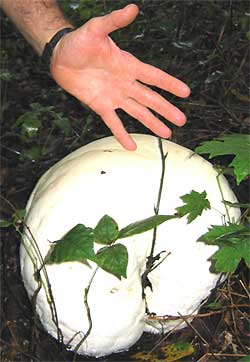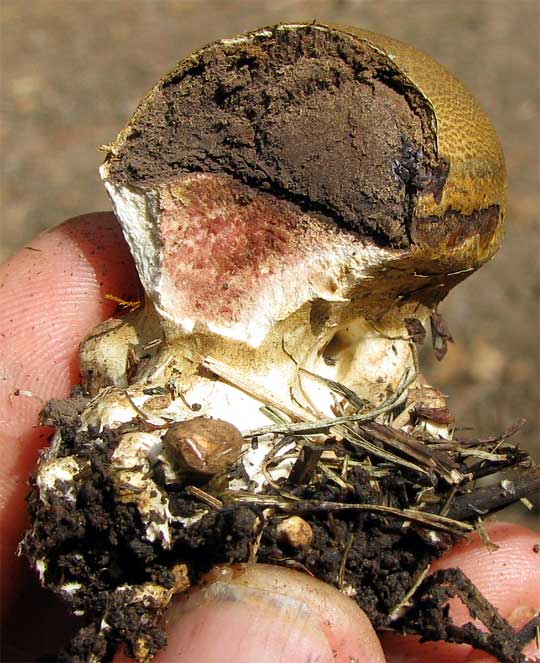(SOURCE: NCBI database)
KINGDOM: Fungi
DIVISION: Basidiomycota
CLASS: Agaricomycetes
ORDER: Lycoperdales
Puffballs are distinguished by their spores being produced inside a a ball-like fruiting body called a gasterothecium, which is a kind of spore-producing basidiocarp. The puffball we see is a gasterothecium.
 Giant Puffball, Calvatia gigantea, in central Kentucky, image by Christie Dunn of Oregon
Giant Puffball, Calvatia gigantea, in central Kentucky, image by Christie Dunn of OregonThe gasterothecium is filled with a spore-bearing mass called a gleba, which can exhibit various textures and colors. When the gleba matures, the gasterothecium remains closed until the spores are fully mature and released from microscopic basidia. Then at the top of the gasterothecium a hole forms or else the whole puffball becomes brittle and breaks apart, and the spores escape. Their expulsion is passive; They're not forcibly removed. Below, a puffball has been cut down the center to show a brown gleba atop white base tissue:

In general, puffballs, which are quite common, are good to eat when their gelba is firm and white, not already turning into spores. However, in North America the genus Scleroderma -- an "earthball," not a puffball -- might be confused with a puffball and may make some people sick. It forms a purple gleba from the first, so it's easy to identify. Just don't eat any puffball whose gleba is not white, soft and fresh-looking.
Also, some poisonous stalked mushrooms, such as the deadly Amanitas, emerge from a button stage which might look like a puffball. However, if you cut such a button stage down the middle, you'll see the typical mushroom shape inside and know that it's not a puffball, and therefore you should be careful about eating it.